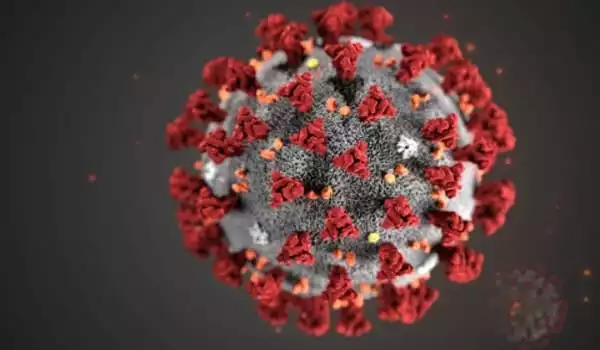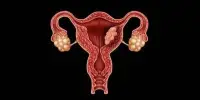A new study describes the extent of the COVID-19 pandemic’s impact on public health: Many public health workers have been redeployed to COVID-related duties, resulting in reduced or suspended services for other critical public health issues. As a result, research into other communicable diseases, food-borne illnesses, public-health surveillance, chronic diseases, and other critical services have been hampered.
COVID-19, a virus that emerged in late 2019 and has claimed 5 million lives to date, is making headlines on a daily basis. It has taken away our loved ones, our jobs, our plans, and so much more. The impact on those who care for the sick and dying has been extensively researched, and the exhaustion of health care workers who work extra shifts to compensate for inadequate staffing is well documented. However, the true scope of this scourge is unknown.
Now, a new study published in the journal PLoS ONE reveals another layer of impact: how the virus’s response has pounded the United States’ public health system, particularly its workers and the critical services they provide to millions.
The study, led by Jennifer Horney, professor and founding director of the University of Delaware’s Epidemiology Program, sheds a sobering light on the state of the public health workforce and raises serious concerns about the sustainability of public health services and programs in the future.
That has an impact on the overall health of the population. Those things did not simply vanish. People still had high blood pressure, and an increasing number of people died as a result of substance abuse, but those programs were halted.
Professor Jennifer Horney
Particularly concerning is the fact that many public health workers have been redeployed to COVID-related duties during the pandemic response, resulting in reduced or suspended services for other critical public health issues. As a result, research into other communicable diseases, food-borne illnesses, public-health surveillance, chronic diseases, and other critical services has been hampered.
“That has an impact on the overall health of the population,” Horney explained. “Those things did not simply vanish. People still had high blood pressure, and an increasing number of people died as a result of substance abuse, but those programs were halted.” She and her colleagues wanted to collect some of that data while also looking ahead. “How will the workforce look in the future?” she asked.
It’s a troubling snapshot based on survey responses from 298 people working in public health roles, including government agencies and academic departments. The surveys assessed professional experience, mental and physical health status, and career plans, as well as some reflection on how their views and experiences had changed from pre-pandemic to mid-pandemic.
But how do you define the population of public-health workers? It’s not easy, Horney admitted. It includes everyone from epidemiologists, laboratory workers, and environmental health specialists to those who work in prevention programs and those who work to educate the public on a wide range of health issues. Because state systems differ so greatly, determining the number of public health workers in the United States is difficult.

What is known is that the system was severely understaffed and underfunded prior to the pandemic, according to Horney. Many of the most seasoned leaders and employees have had enough. “Those with experience — those who worked through H1N1, Zika, or Ebola — are leaving public health or retiring,” she explained. “Unfortunately, the most experienced public health workers are also the ones who are the most burned out.”
In August, the Centers for Disease Control and Prevention released the findings of a large-scale survey on the impact of the pandemic on the mental health of public health workers. According to researchers, the situation has become even more difficult as a result of external pressures, which have harmed public trust and sometimes resulted in firings, resignations, and accelerated retirements.
“I’ve had my moments during this thing,” Horney admitted. “But I enjoy this work, as do most people who choose a career in public health. This is a genuine article. I wish people understood everything that public health entails.”
Studies like this one can help to explain the wide range of issues dealt with by public health workers, especially when they are not diverted to the pandemic response. COVID-related redeployments resulted in significant reductions in several areas, including chronic disease (39 percent reduction), maternal-child health (42 percent reduction), substance abuse (28 percent reduction), environmental health (26 percent reduction), and injury (37 percent reduction), as well as 47 percent reductions in HIV/STI programs, health disparities, and others.
Significant declines were also observed in program evaluation and health education. The number of workers in infectious disease and preparedness, on the other hand, remained constant from pre-pandemic to mid-pandemic periods, according to the study.
Most employees were also on the job for many more hours. Prior to the pandemic, approximately 21% of the 282 respondents who worked in public health in January 2020 said they worked more than 40 hours per week. By the mid-pandemic, this had risen to more than two-thirds (August to October 2020). Prior to the pandemic, approximately 7% reported working more than five days per week. By the halfway point of the pandemic, two-thirds of them were working more than five days a week.
The study emphasizes the importance of increased funding and expanded educational opportunities in addressing these issues and preparing for the future. “What remains unknown, but critically important to quantify, are the impacts to the public’s health that will result from these interruptions during the COVID-19 response,” the study says.
Kristina W. Kintziger of the University of Tennessee at Knoxville, Kahler W. Stone of Middle Tennessee State University, and Meredith Jagger of Austin, Texas, are among Horney’s study collaborators. Stone was Horney’s doctoral student, and Kintziger was a mentee on a previous National Science Foundation grant.
Future research is already underway to delve deeper into a number of issues and to examine how perspectives and experiences have shifted as a result of the challenges of 2021. The study has several limitations, according to the researchers, including an over-representation of female, white respondents under the age of 40 and the inability to generalize findings due to wide differences in health departments across the country.
















